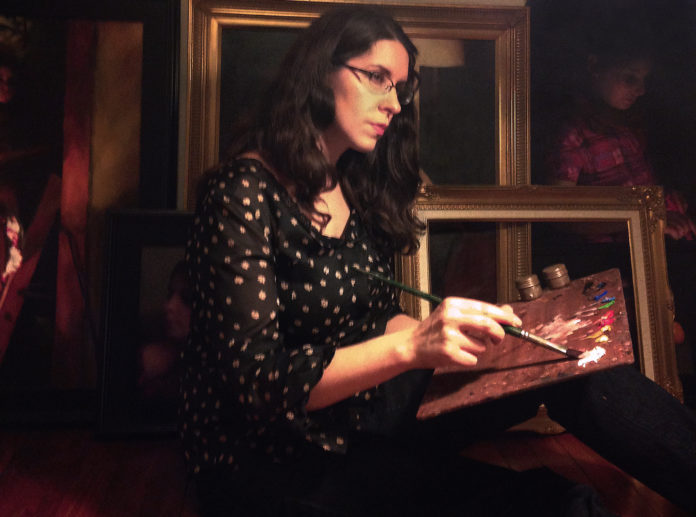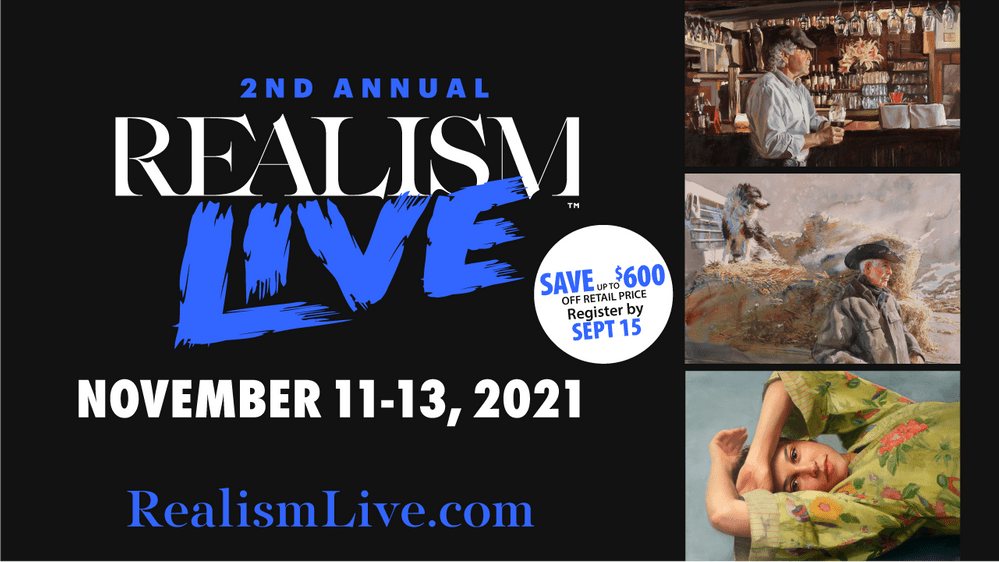How contemporary realism is not something new, but a long-standing, timeless notion.
Contemporary Realism and the Search for Academic Training
BY STEPHANIE DESHPANDE
I wasn’t aware that while I was seeking out traditional academic training in painting, there was a small movement, called Derriere-Garde, occurring congruently in New York City. The movement sought to acknowledge the artists who painted contemporary themes, but borrowed many of the traditional techniques of academic art.
The faint smell of cigarette smoke lingered in the air. A harsh fluorescent light hung over a dark, lacquered table, a table so heavy that it seemed weighted to the ground. Despite the overall darkness in the cellar, the deep red carpet cast a mysterious crimson hue across the bottom plane of my friends’ faces.
There was never a dull moment with this group of characters. There was drama in every moment. Guys would sing their favorite songs, girls would crack jokes that would send everyone laughing to the point of tears. There were playful fights and intense arguments. I sat there quietly watching, enjoying every moment.
These were the summer nights of 1992, and the last chance all my friends—spanning the senior to freshman classes—would have to be together. That basement is where much time was spent and many card games played. The dynamics I witnessed sparked a deep interest in social dynamics, power struggles, religion, and psychology that I saw in my day-to-day life. Themes such as card games, chess, and dramatic lighting would permeate my work for years to come.
During my high school years, I would also spend time at home working on a painting, writing, reading, or looking through art books. Around that time a friend of mine introduced me to John Singer Sargent’s artwork. She was adamant that I would like his work. She showed me a print she got from the Museum of Fine Arts in Boston of a little girl with a distant look, touching flowers in a large vase. It was Sargent’s portrait of Helen Sears, painted in 1895.
I was captivated by the girl’s realistic gaze, and from then on Sargent became one of my favorite artists. In addition to painting the unique beauty of his subjects, he also captured a sense of character and personality. I marveled at the quiet mystery of his Venetian paintings and at the theatrical flair and dramatic lighting in his painting El Jaleo.
It became clear to me that I wanted to create narrative paintings that capture individual likeness and focus on the interaction between people, or on the psychology of one person.
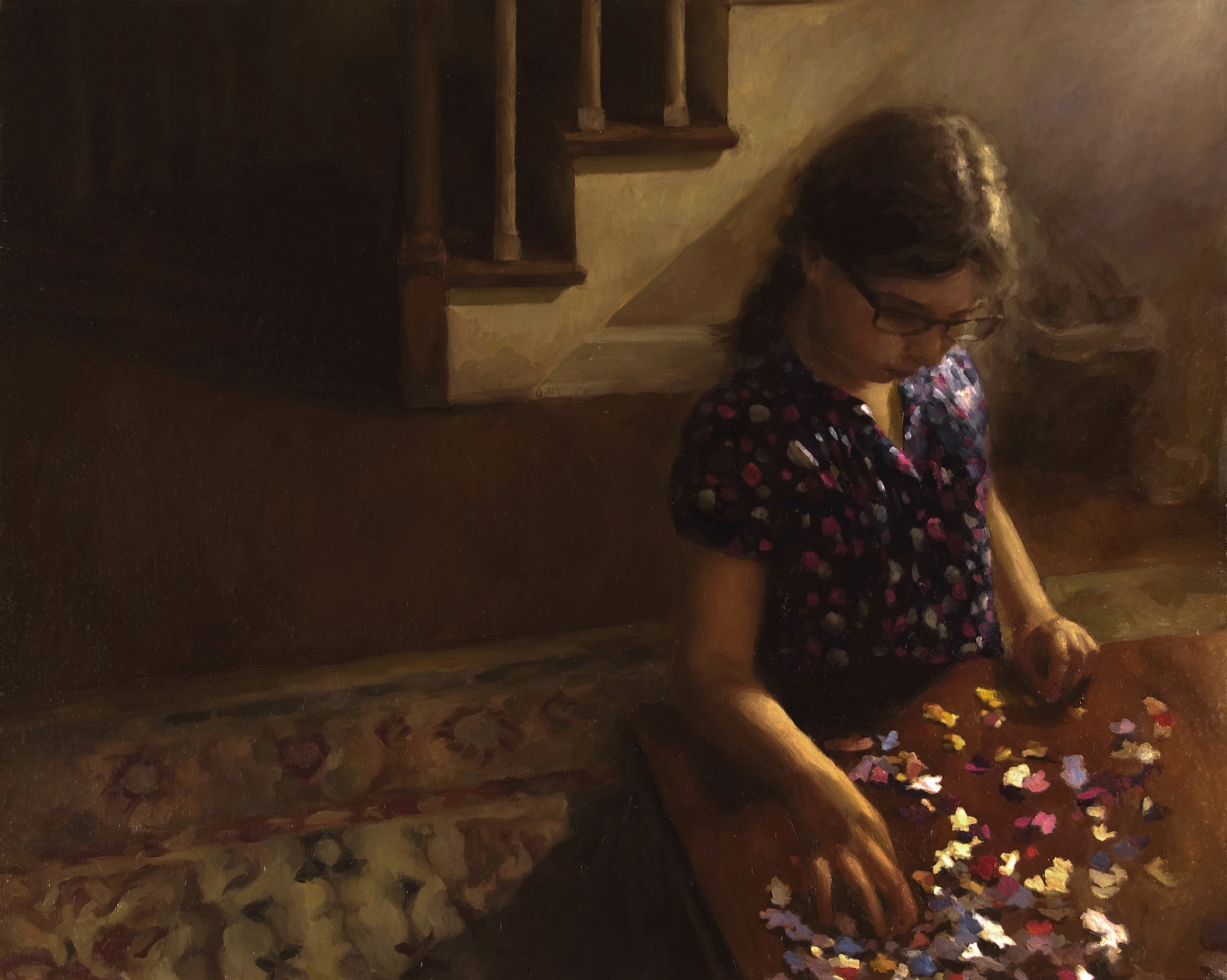
Once in college, I was shocked to find out that I would not be taught the foundations of traditional art. It seemed ludicrous that this basic training was not a standard part of the art curriculum in a state university art program. My professors no longer had the classical skills to pass on, since they were only taught about modern art. I was supported and encouraged, but virtually left to teach myself.
An artist needs to learn the visual techniques to convey ideas. Without training, an artist is handicapped—just as a musician cannot play music without first learning about notes, scales, rhythm, and harmony. One must learn the rules before being able to use them in an individual and unique manner. Passion alone is not enough to create beautiful art. A poem written from the heart but riddled with clichés is not as powerful as a poem skillfully and thoughtfully composed.
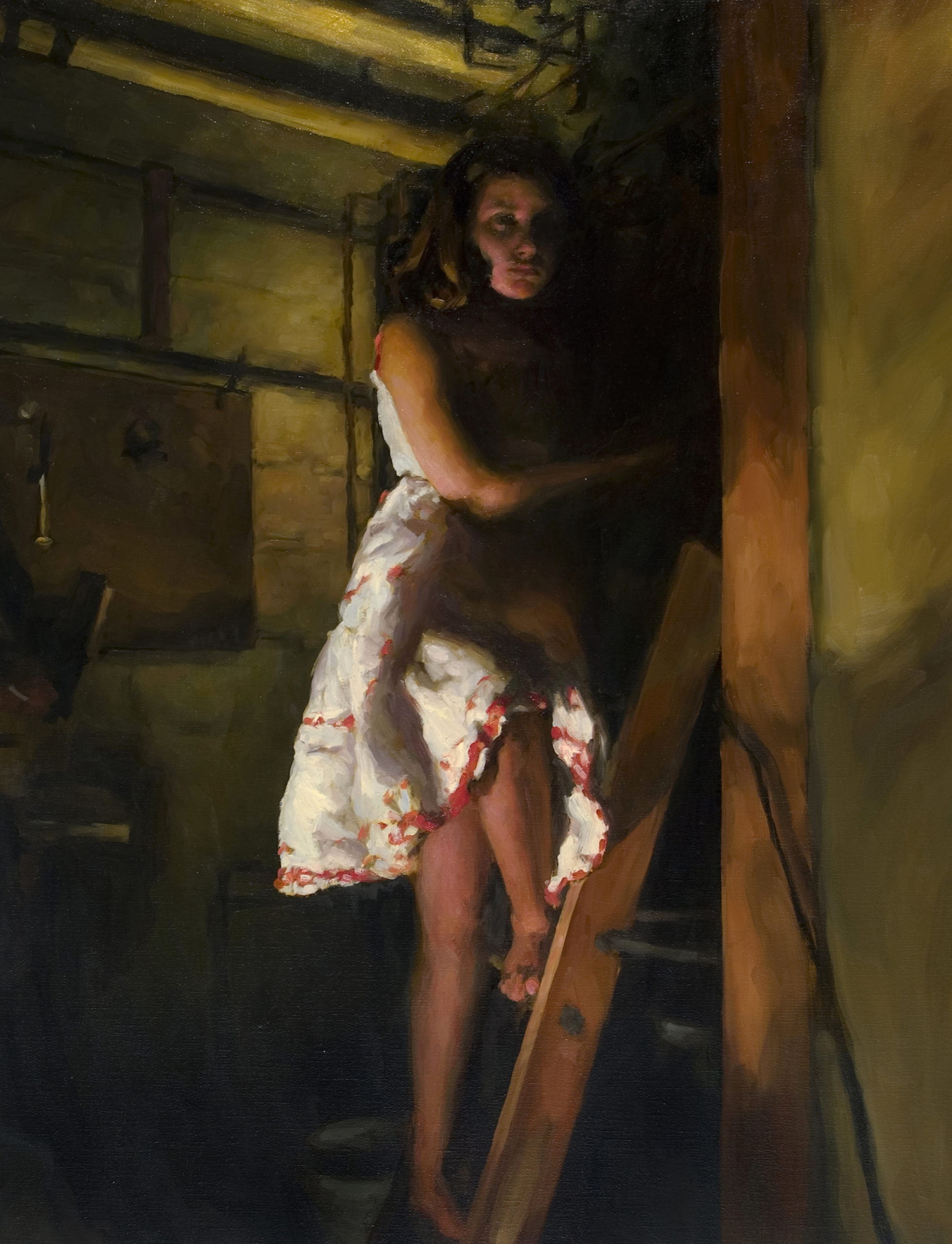
Fortunately, my mother ran across an article in the paper about Paul Ingbretson’s atelier one town over from where I lived, and knowing of my views on classical training, she suggested that I study there over my winter break. Ingbretson is part of the Boston School tradition. He studied under R.H. Ives Gammell, who learned his techniques from William McGregor Paxton—linking back to artists such as Jean-Léon Gérôme and Paul Delaroche, who taught at the Académie Julian and École des Beaux-Arts in France.
I attended the Ingbretson atelier for one month, and studied under Meg Mercier, who taught me how to draw from a cast. This helped me develop not only my skills as an artist, but also set the tone for a newly found direction in art.
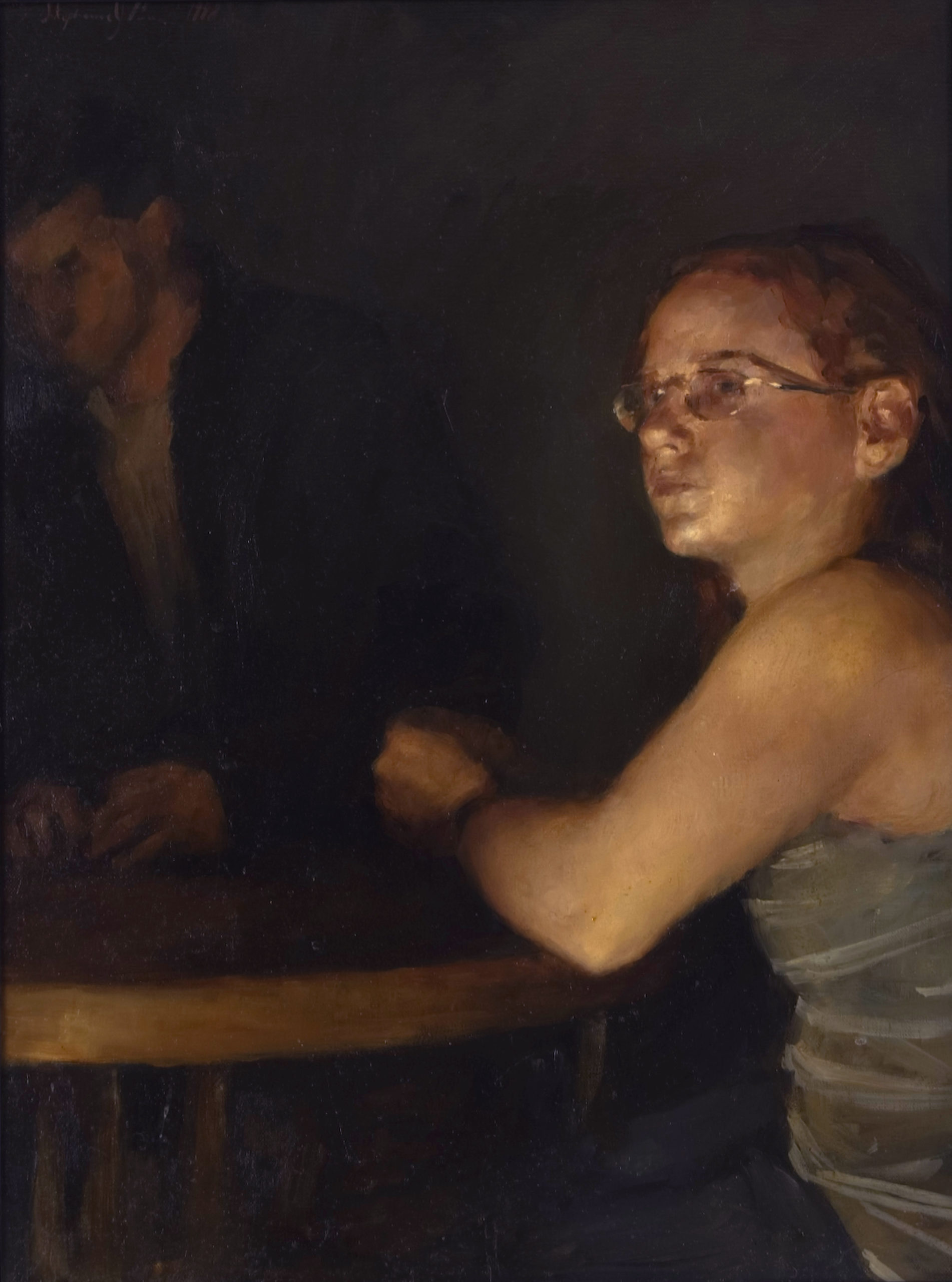
The Derriere-Garde Art Movement
I wasn’t aware that while I was seeking out traditional academic training in painting, the Derriere-Garde movement was occurring congruently in New York City. Derriere-Garde was founded in the mid-1990s by Stefania de Kenessey. The movement called out to “celebrate technique as artistically liberating, and beauty as a universal value.”
The article by Kanchan Limaye, “Adieu to the Avant-Garde—As the Artistic Regime Shifts, Realism, Rhyme, and Representation Make a Comeback,” explains how this movement encompassed not only art, but also music and writing.
As for art, Derriere-Garde sought to acknowledge the artists who painted contemporary themes, and who borrowed many of the traditional techniques of academic art. These values have strengthened since the 90s, and numerous contemporary artists have followed the lead of artists such as Steven Assael, Martha Mayer Earlebacher, Vincent Desiderio, and Wade Schuman, who stood behind Derriere-Garde in the 90s.
After college, I was fortunate to find out about the New York Academy of Art (NYAA) — Graduate School of Figurative Art, which has a strong foundation in classical painting techniques. Several NYAA faculty members participated in the protest in front of the Whitney in 1995. It was a relief to finally learn about perspective, anatomy, and get more experience drawing from a plaster cast.
As an artist, I always strive to increase my skill level. I use realism to depict a vivid reality and to enhance the meaning and pathos in my paintings. The spirit I capture is not of a world past, but of today’s world—my world. It was a challenge to seek out the training not taught in most schools.
What keeps me painting is my longing to express ideas with the ease and beauty of artists that have come before me. The passion driving people to relearn what was lost makes contemporary realism more beautiful. Contemporary realism acts as a mirror, reflecting the world back to us, showing us what is most important to us in the twenty-first century.
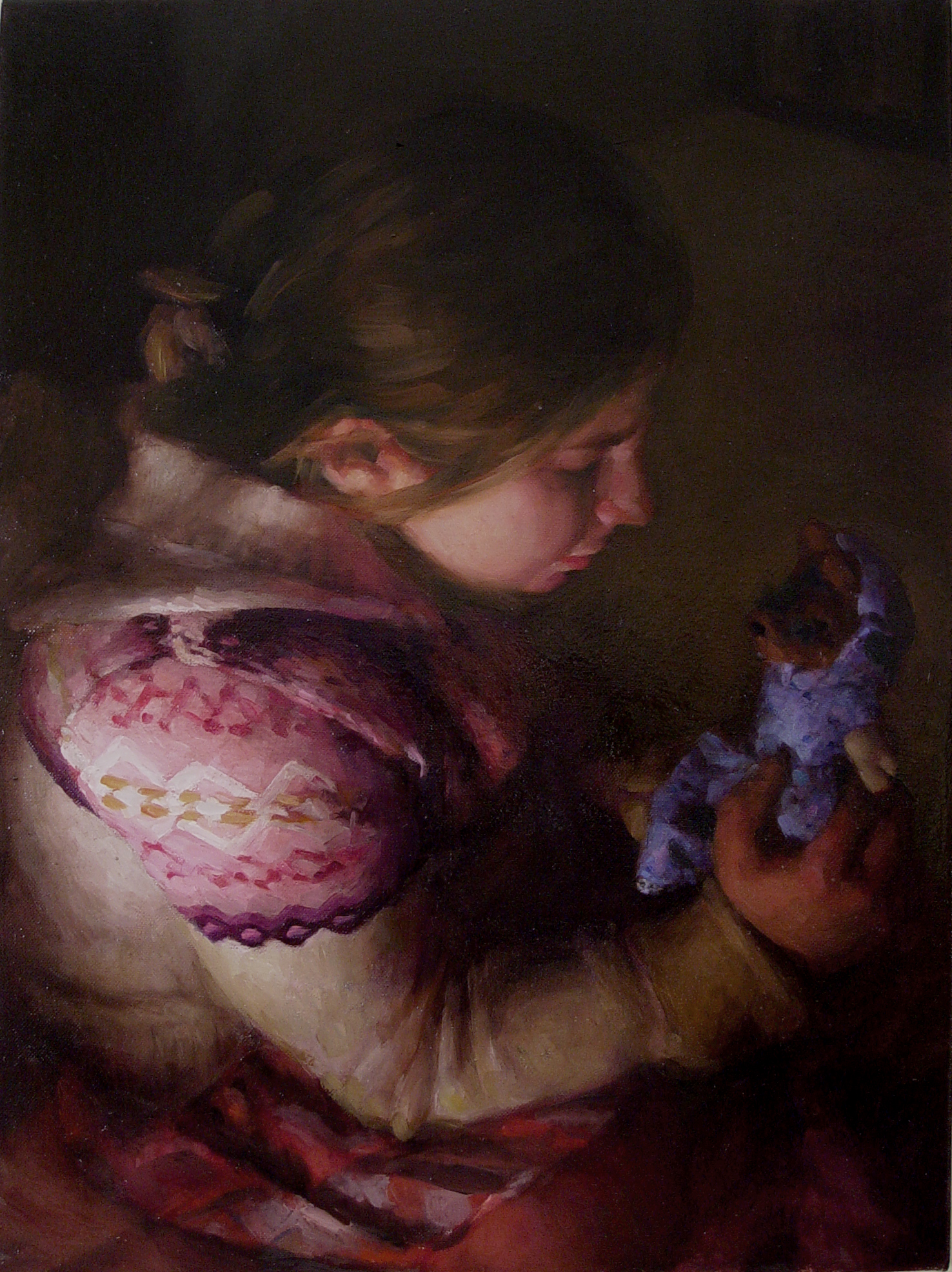
Realism is not something new, but a long-standing, timeless notion. We are visual creatures. We take in information every second through our eyes. We can tell when someone is angry, happy, or sad with a split-second glance. Receiving training in traditional academic techniques isn’t a “throwback” to the past. It allows us to capture emotions and convey the human condition, which is the very essence of art. ~S.D.
Learn more about Stephanie at: www.stephaniedeshpande.com
Related Articles > Browse RealismToday.com for more articles on contemporary realism, narrative paintings, traditional and classical art, and more.
Visit EricRhoads.com (Publisher of Realism Today) to learn about opportunities for artists and art collectors, including:
- Art retreats
- International art trips
- Art conventions
- Art workshops (in person and online)
- And more!


